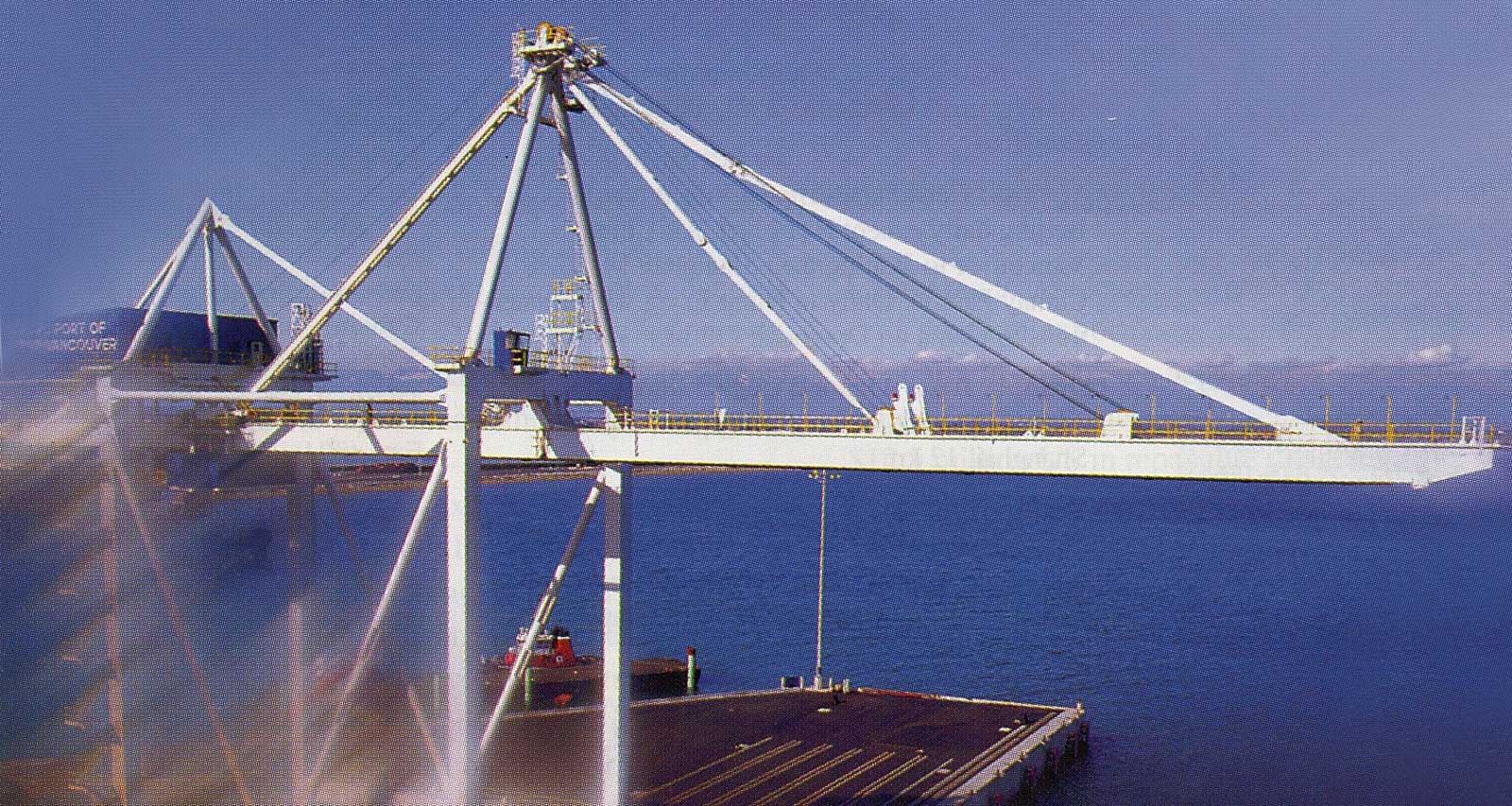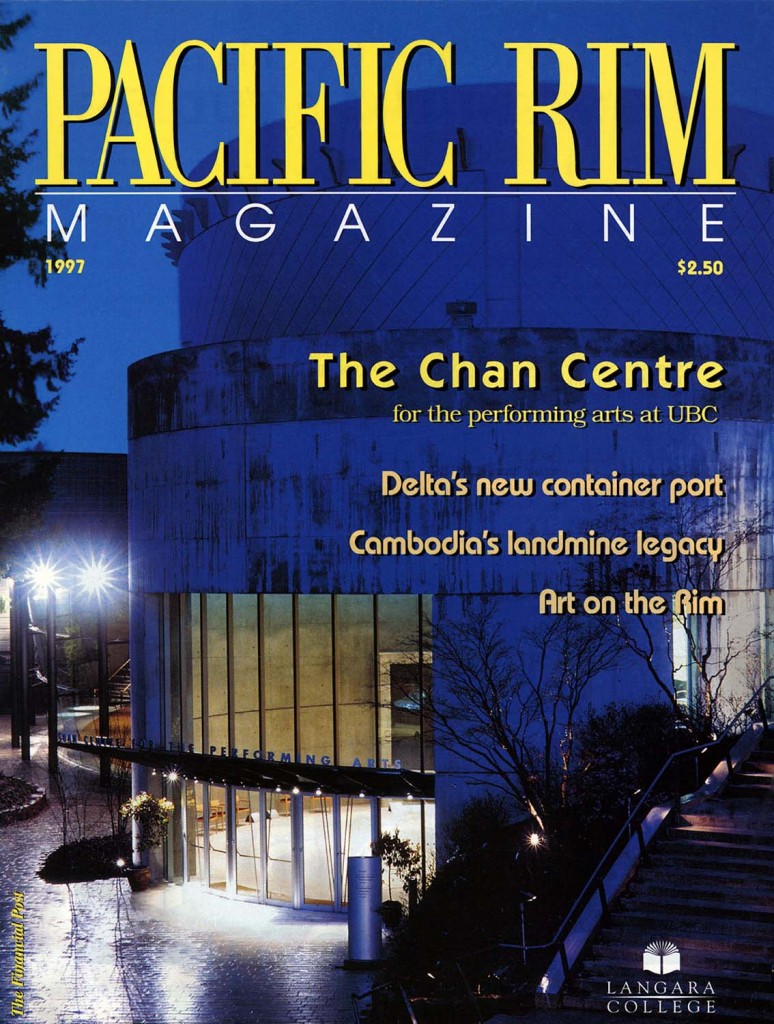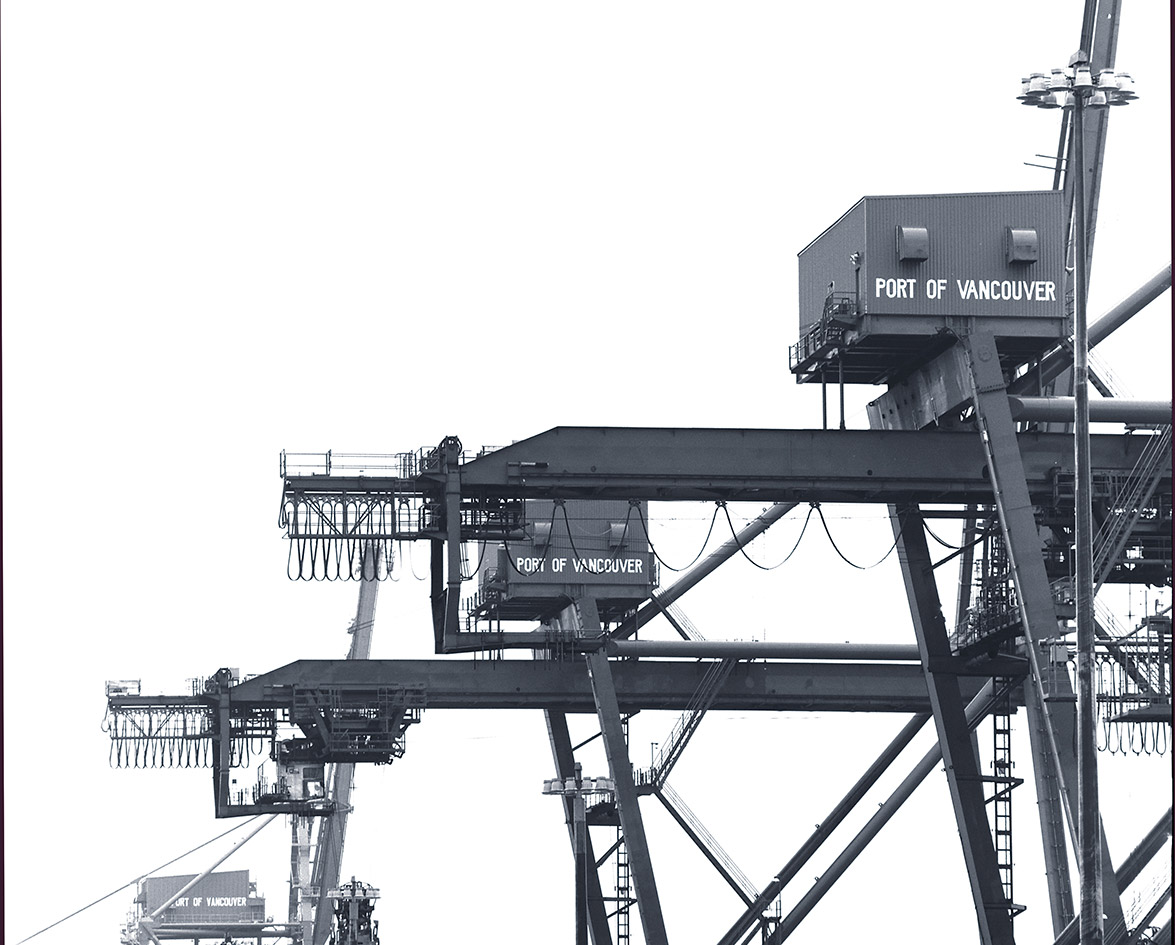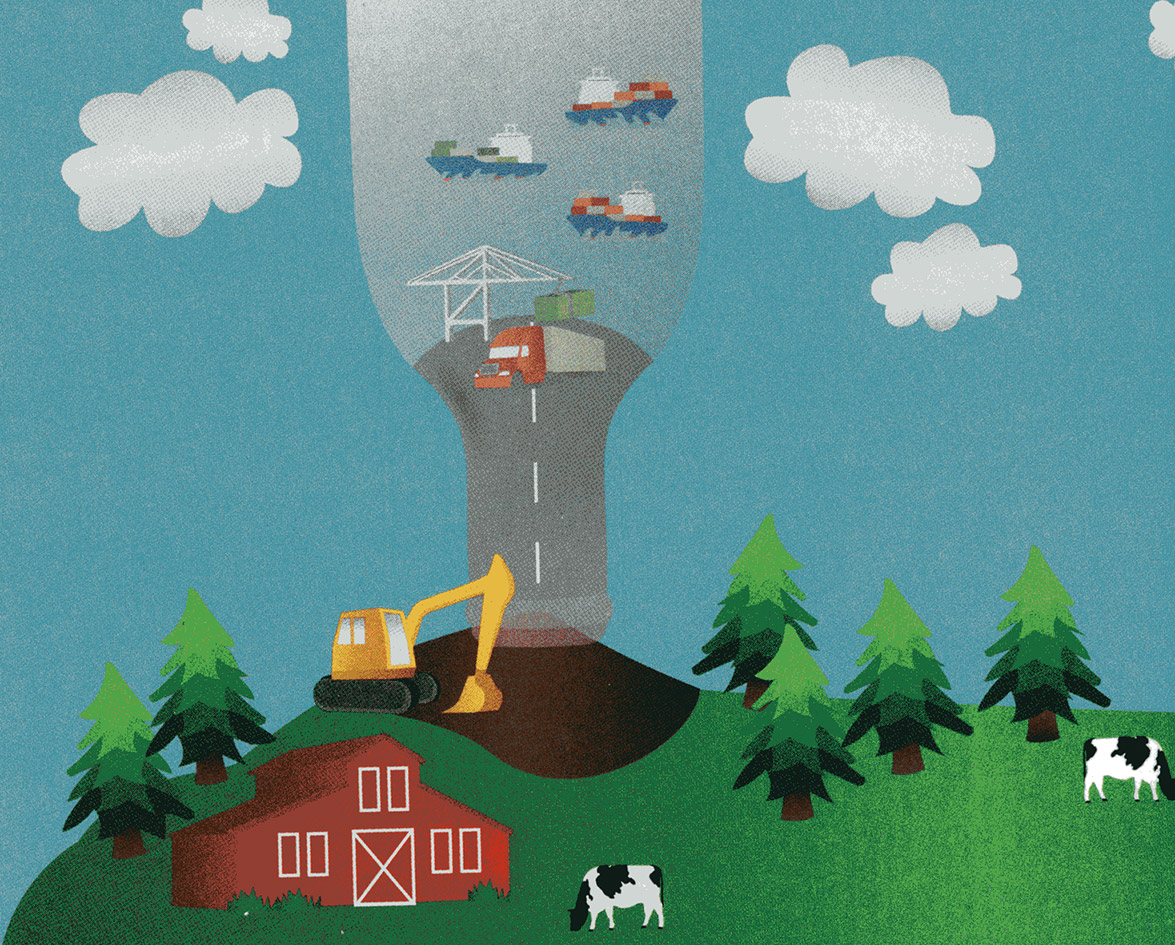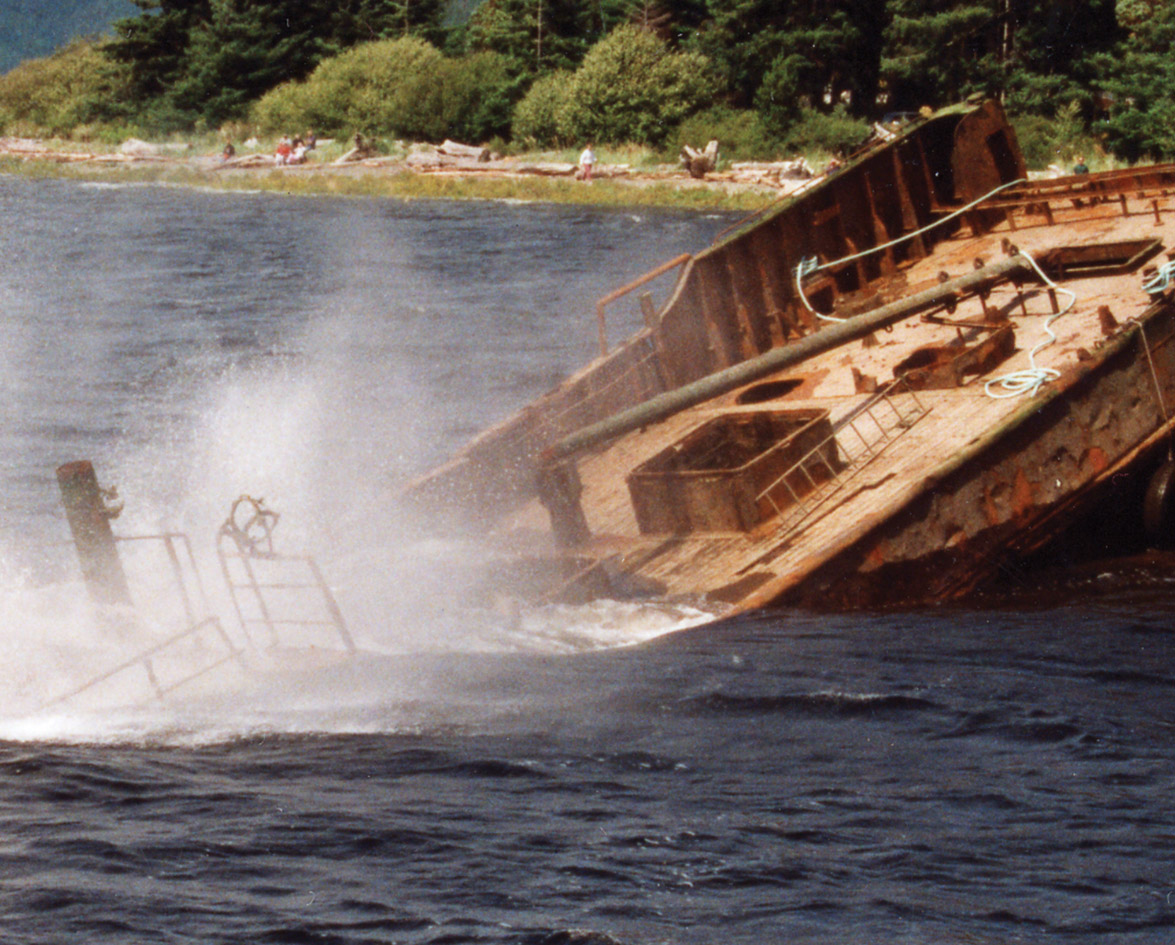When your ferry docks in Tsawwassen this summer, look west towards Roberts Bank. At the eastern tip of this 160 hectare man-made peninsula that pushes three kilometres out into the Strait of Georgia like a gigantic thumb, you will see four massive white cranes. Deltaport, Vancouver’s newest container port, will be fully operational in June. So, you might even see them unloading container cargo off the world’s largest container ships.
Getting Cargo To Enter Canada Again
Under agreement with Terminal Systems Inc. (TSI), the Vancouver Port Corporation (VPC) built this modern facility to lure back Canadian cargo entering and exiting American ports. While the Port of Vancouver has made recent gains over Seattle and Tacoma, it still faces some big obstacles.
This facility was designed for one reason. “Deltaport is probably our biggest initiative to bring back Canadian cargo and also, of course, to address the continued needs of our customers,” said Norman C. Stark, the Vancouver Port Corporation’s president and CEO. “There’s a lot of Canadian cargo that has been moving through the U.S. ports of Seattle and Tacoma. However, in the last 12 months, we have been able to repatriate quite a percentage of those containers. There’s still in excess several hundred thousand TEUs [Twenty-Foot-Equivalent Units] of Canadian containers moving through the U.S. Our goal is to get back as much of that as we can,” Stark said.
Seattle and Tacoma are Vancouver’s biggest competitors. “I think probably the Seattle, Tacoma and Vancouver areas are, to some extent, competing for the transpacific cargo destined for the midwest of Canada and the U.S., as well as the East Coast,” said Mike Merritt, corporate and marine media officer for the Port of Seattle. “What we are essentially competing for is discretionary cargo.” VPC statistics explain that this discretionary cargo includes a variety of semi-finished and unfinished products: lumber, grain, wood pulp, animal feed, meat and fish, newsprint, metal ore concentrates, chemicals, plywood, iron, steel and alloys.
Making The Docks Big Enough
According to the same statistics, Vancouver container terminals increased trade in these materials by 24 per cent in 1996 over 1995. VPC said that they accomplished much of it at the expense of Seattle and Tacoma. “Every time a container ship docks in Vancouver harbour, it creates four person-years of work. It’s certainly a big generator of economic activity,” Stark said. To attract this economic wealth, Deltaport must be able to accommodate Post Panamax container vessels-the world’s largest container ships.
“The people who are building these ships are making a conscious decision, saying ‘okay we are going to forget the Panama canal and we are going to build these huge ships that can accommodate a lot more cargo,'” said Barry Sime, TSI’s project leader at Deltaport.
When these massive ships visit Deltaport, water depth will not be an issue, even at low tide. This deep-water port provides container ships with 670 metres of berth space, enough for two ships to be docked.
Standing next to these long berths are four Post Panamax container gantry cranes. They tower over the expansive yard which is capable of holding 13,000 TEUs at any given time. A key feature of these newly designed cranes is the extra-long outreach of their booms. Manufactured by the Zhenhua Port Machinery Co. in Shanghai, China, they are the workhorses of the terminal. They are each capable of moving 40 containers an hour, and two can unload a single ship simultaneously.
Making Deltaport The Best
Fast and powerful cranes mean that the ground crews will be busy. The cranes unload the containers onto triple-tractor trailers. Some cargo is stacked in the yard by rubber-tired gantry cranes, while other cargo is moved to rail-mounted gantry cranes to be loaded onto waiting trains. This train service is one of Deltaport’s most important features. Most older terminals do not have on-dock rail; the cargo has to be trucked off the terminal and loaded elsewhere.
One important new feature at Deltaport is not even visible. “We use a lot of radio communication rather than voice,” said Sime, and “positional determination systems” have been mounted on all cranes. These new automated systems help workers keep track of the cargo.
With the help of this new facility, Norman C. Stark believes that the Port of Vancouver could supply the United States market with consumer goods. “We do have an interest in the U.S. Midwest. In terms of numbers, I wouldn’t like to put a number on this. Certainly we do have strategies,” Stark said. However, in a report titled Directions for Growth: Report and Recommendations on the Competitive Position of the Greater Vancouver Gateway Sea Ports, the Greater Vancouver Gateway Council (GVGC), a council representing Vancouver’s major transportation interests, listed several areas where U.S. Pacific Northwest ports are more competitive.
Port Taxes
The GVGC reported that U.S. ports have lower tax-exempt bond financing. The less favourable terms available in Canada reduce shippers’ and terminal operators’ certainty about future costs and lower Canadian Gateway ports’ competitiveness. The GVGC also reports that U.S. Pacific Northwest ports pay lower municipal taxes, translating to an extra cost of $40 per tonne for Gateway ports. An additional advantage for U.S. Pacific Northwest ports is that they have no shareholders to pay. “The Vancouver Port Corp. pays 30 per cent of its net income as a dividend to the federal government,” said Bob Wilds, vice chairperson of the GVGC and president of the B.C. Maritime Employers Association. Gateway ports also pay a 30 percent provincial corporate capital tax which U.S. Pacific Northwest ports do not have to pay.
Actually, U.S. Pacific Northwest ports are taxing authorities rather than tax payers. “In effect, the ports of Seattle and Tacoma levy taxes on the residents of the counties, whereas here our port authorities pay grants in lieu of taxes to municipalities and others,” said Wilds. The GVGC reported that Seattle raises $35 million US in taxes every year, and Tacoma and Portland raise a total of $6 million US, thereby reducing their individual overhead costs.
“It certainly puts the United States at an advantage on the cost handling basis because our terminal operators have to recover the costs in the handling of containers or general bulk cargo,” Wilds said. “Despite the fact we have an advantage on wages, benefit costs, and the differential in the dollar, a significant amount of that is offset by the differential in the U.S. taxation methods,” he added.
According to Mike Merritt, the American ports are competitive for at least one more reason. “I think at this point what the Port of Seattle and Tacoma might suggest [is that] the freight rail connection between the Pacific Northwest, the Midwest and the East Coast of the U.S. is substantially better than the connection that exists between those markets and Vancouver. That is, for goods coming out of Vancouver to reach Chicago or New York, at this point, it is slower by some days.”
Still, as Norman C. Stark looks towards the future, he is optimistic about Deltaport’s and Vancouver’s ability to compete. “We are today a strong force on the West Coast and I think that we are going to go from strength to strength, because we have the people here committed to providing our customers with extra services that they need to be competitive in their own businesses.”





